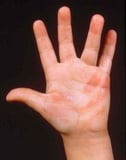Effects Of Low Vitamin C
In developed countries, vitamin C deficiency can occur as part of general undernutrition, but severe deficiency (causing scurvy) is uncommon. Symptoms include fatigue, depression, and connective tissue defects (eg, gingivitis, petechiae, rash, internal bleeding, impaired wound healing). In infants and children, bone growth may be impaired. Diagnosis is usually clinical. Treatment consists of oral vitamin C.
Vitamin C plays a role in collagen, carnitine, hormone, and amino acid formation. It is essential for bone and blood vessel health and wound healing and facilitates recovery from burns. Vitamin C is also an antioxidant, supports immune function, and facilitates the absorption of iron (see table Sources, Functions, and Effects of Vitamins Sources, Functions, and Effects of Vitamins Vitamins may be Fat soluble (vitamins A, D, E, and K) Water soluble (B vitamins and vitamin C) The B vitamins include biotin, folate, niacin, pantothenic acid, riboflavin (B2), thiamin (B1)... read more ).
Dietary sources of vitamin C include citrus fruits, tomatoes, potatoes, broccoli, strawberries, and sweet peppers. (See also Overview of Vitamins Overview of Vitamins Vitamins may be Fat soluble (vitamins A, D, E, and K) Water soluble (B vitamins and vitamin C) The B vitamins include biotin, folate, niacin, pantothenic acid, riboflavin (B2), thiamin (B1)... read more .)
Severe vitamin C deficiency results in scurvy, a disorder characterized by hemorrhagic manifestations and abnormal osteoid and dentin formation.
In adults, primary vitamin C deficiency is usually due to
-
Inadequate diet
The need for dietary vitamin C is increased by febrile illnesses, inflammatory disorders (particularly diarrheal disorders), achlorhydria, smoking Tobacco Tobacco use is a major individual and public health problem. Dependence develops rapidly. Major consequences include premature death and morbidity caused by cardiovascular disease, lung and... read more , hyperthyroidism Hyperthyroidism Hyperthyroidism is characterized by hypermetabolism and elevated serum levels of free thyroid hormones. Symptoms are many and include tachycardia, fatigue, weight loss, nervousness, and tremor... read more  , iron deficiency Iron Deficiency Iron (Fe) is a component of hemoglobin, myoglobin, and many enzymes in the body. Heme iron, contained mainly in animal products, is absorbed much better than nonheme iron (eg, in plants and... read more , cold or heat stress, surgery, burns Burns Burns are injuries of skin or other tissue caused by thermal, radiation, chemical, or electrical contact. Burns are classified by depth (superficial and deep partial-thickness, and full-thickness)... read more
, iron deficiency Iron Deficiency Iron (Fe) is a component of hemoglobin, myoglobin, and many enzymes in the body. Heme iron, contained mainly in animal products, is absorbed much better than nonheme iron (eg, in plants and... read more , cold or heat stress, surgery, burns Burns Burns are injuries of skin or other tissue caused by thermal, radiation, chemical, or electrical contact. Burns are classified by depth (superficial and deep partial-thickness, and full-thickness)... read more  , and protein deficiency. Heat (eg, sterilization of formulas, cooking) can destroy some of the vitamin C in food.
, and protein deficiency. Heat (eg, sterilization of formulas, cooking) can destroy some of the vitamin C in food.
When vitamin C is deficient, formation of intercellular cement substances in connective tissues, bones, and dentin is defective, resulting in weakened capillaries with subsequent hemorrhage and defects in bone and related structures.
Bone tissue formation becomes impaired, which, in children, causes bone lesions and poor bone growth. Fibrous tissue forms between the diaphysis and the epiphysis, and costochondral junctions enlarge. Densely calcified fragments of cartilage are embedded in the fibrous tissue. Subperiosteal hemorrhages, sometimes due to small fractures, may occur in children or adults.
Symptoms and Signs of Vitamin C Deficiency
In adults, symptoms of vitamin C deficiency develop after weeks to months of vitamin C depletion. Lassitude, weakness, irritability, weight loss, and vague myalgias and arthralgias may develop early.
Symptoms of scurvy (related to defects in connective tissues) develop after a few months of deficiency. Follicular hyperkeratosis, coiled hair, and perifollicular hemorrhages may develop. Gums may become swollen, purple, spongy, and friable; they bleed easily in severe deficiency. Eventually, teeth become loose and avulsed. Secondary infections may develop. Wounds heal poorly and tear easily, and spontaneous hemorrhages may occur, especially as ecchymoses in the skin of the lower limbs or as bulbar conjunctival hemorrhage.
Other symptoms and signs include femoral neuropathy due to hemorrhage into femoral sheaths (which may mimic deep venous thrombosis), lower extremity edema, and painful bleeding or effusions within joints.
In infants, symptoms include irritability, pain during movement, anorexia, and slowed growth. In infants and children, bone growth is impaired, and bleeding and anemia may occur.
-
Usually clinical (based on skin or gingival findings and risk factors)
Diagnosis of vitamin C deficiency is usually made clinically in a patient who has skin or gingival signs and is at risk of vitamin C deficiency. Laboratory confirmation may be available. Complete blood count is done, often detecting anemia. Bleeding, coagulation, and prothrombin times are normal.
Skeletal x-rays can help diagnose childhood (but not adult) scurvy. Changes are most evident at the ends of long bones, particularly at the knee. Early changes resemble atrophy. Loss of trabeculae results in a ground-glass appearance. The cortex thins. A line of calcified, irregular cartilage (white line of Fraenkel) may be visible at the metaphysis. A zone of rarefaction or a linear fracture proximal and parallel to the white line may be visible as only a triangular defect at the bone's lateral margin but is specific. The epiphysis may be compressed. Healing subperiosteal hemorrhages may elevate and calcify the periosteum.
Laboratory diagnosis, which requires measuring blood ascorbic acid, is sometimes done at academic centers. Levels of < 0.6 mg/dL (< 34 mcmol/L) are considered marginal; levels of < 0.2 mg/dL (< 11 mcmol/L) indicate vitamin C deficiency. Measurement of ascorbic acid levels in the white blood cell-platelet layer of centrifuged blood is not widely available or standardized.
In adults, scurvy must be differentiated from arthritis, hemorrhagic disorders, gingivitis, and protein-energy undernutrition. Hyperkeratotic hair follicles with surrounding hyperemia or hemorrhage are almost pathognomonic. Bleeding gums, conjunctival hemorrhages, most petechiae, and ecchymoses are nonspecific.
-
Nutritious diet with supplemental ascorbic acid
For scurvy in adults, ascorbic acid 100 to 500 mg orally 3 times a day is given for 1 to 2 weeks, until signs disappear, and followed by a nutritious diet supplying 1 to 2 times the daily recommended intake.
In scurvy, therapeutic doses of ascorbic acid restore the functions of vitamin C in a few days. The symptoms and signs usually disappear over 1 to 2 weeks. Chronic gingivitis with extensive subcutaneous hemorrhage persists longer.
Vitamin C 75 mg orally once a day for women and 90 mg orally once a day for men prevents deficiency. Smokers should consume an additional 35 mg/day. Five servings of most fruits and vegetables (recommended daily) provide > 200 mg of vitamin C.
-
The need for vitamin C is increased by fever, inflammation, diarrhea, smoking, hyperthyroidism, iron deficiency, cold or heat stress, surgery, burns, and protein deficiency.
-
After weeks or months, the deficiency causes nonspecific symptoms (eg, weakness, lassitude, irritability, arthralgias, myalgias); later, connective tissue is affected, causing follicular hyperkeratosis, coiled hair, swollen and bleeding gums, loose teeth, poor wound healing, and spontaneous hemorrhages.
-
In patients who have skin or gingival symptoms or risk factors for the deficiency, measure the ascorbic acid level.
-
Treat with supplemental ascorbic acid and a nutritious diet.
Source: https://www.msdmanuals.com/professional/nutritional-disorders/vitamin-deficiency,-dependency,-and-toxicity/vitamin-c-deficiency



0 Komentar